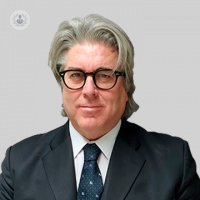Sinus lift vs. alternative bone grafting techniques: A periodontist’s guide
Escrito por:Bone grafting is a cornerstone in modern dentistry, particularly for patients requiring dental implants in areas with insufficient bone density. The sinus lift procedure and alternative bone grafting techniques are two commonly used methods to enhance bone volume. Understanding the distinctions between these techniques helps periodontists tailor treatment plans to individual patient needs.

Sinus lift
A sinus lift, also known as sinus augmentation, is primarily employed to increase bone height in the upper jaw beneath the maxillary sinuses. This procedure is essential for patients who have experienced bone loss due to tooth extractions, periodontal disease, or natural ageing.
During the procedure, a small incision is made in the gum tissue to access the sinus membrane, which is gently elevated. Bone grafting material is then placed in the space created, promoting new bone growth over several months. The sinus lift is highly effective but requires precise planning and execution due to its proximity to the sinuses and other anatomical structures.
Alternative techniques
Alternative bone grafting techniques offer solutions for patients where a sinus lift may not be ideal. Ridge augmentation, for example, addresses bone width and height deficiencies along the jawline. Autogenous bone grafts, harvested from the patient's own body, provide a natural and biocompatible source of bone.
Allografts and xenografts, derived from donors or animal sources, offer alternatives when autogenous bone is not feasible. Advanced techniques like guided bone regeneration (GBR) use resorbable membranes to facilitate the growth of new bone in specific areas. Each method has distinct benefits and considerations, including recovery time, cost, and patient-specific anatomy.
Choosing between a sinus lift and alternative bone grafting techniques depends on several factors, such as the location of the missing tooth, the extent of bone loss, and the patient’s overall health. Periodontists must assess these variables to recommend the most effective approach. Both options aim to provide a stable foundation for dental implants, ensuring long-term success and improved oral functionality. By leveraging these techniques, periodontists can restore patients’ smiles and enhance their quality of life.


